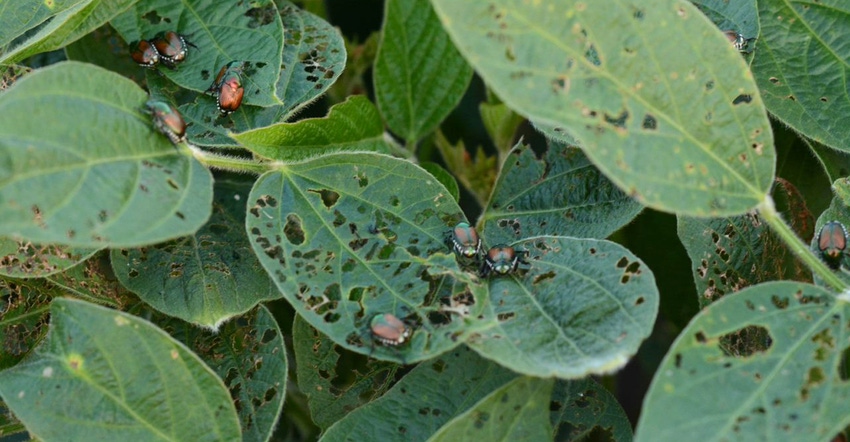
Planting is wrapping up, and now it is time to think about maintaining that crop. Scott Schirmer, state plant regulatory official at the Illinois Department of Agriculture, shares how scouting fields for insects is an important management practice.
“Scouting is one of those tools we have in the Integrated Pest Management toolbox,” Schirmer says. “A lot of what you do afterward as far as management of your crops is going to be dependent upon your scouting.”
He says using evidence from scouting such as yellow leaves, feeding damage and insects present on plants allows farmers to take necessary steps such as sample collection and consulting a specialist to determine what is causing damage to fields.
Issues with insects are primarily based upon weather conditions and field location, Schirmer says. For example, a cool, wet environment could bring on more fungal pathogens, while a hot spring may result in an early emergence of insect pests.
“There are some pests like European corn borer that we just expect to see every year, but there may be down years and up years for them,” he says. “It is going to be dependent on the environment, weather conditions and development of the plant.”
Schirmer notes that pests become more prevalent at different times, so plan scouting around plant developmental stages to help plan timing of pest control products.
How often you scout your fields can be based upon each field’s condition and your flexibility to complete an observation.
“The more opportunity you have to go look at the field, the more opportunity you have to catch something early,” Schirmer says, adding that tools such as drones can be a way to perform scouting and anticipate pest problems.
If you don’t check a particular field for a month, then that is a potential month of pest damage going unnoticed, he says. Whereas, if you go out there every two or three days, you can respond quickly with a pesticide application.
Scouting is really about awareness, Schirmer says. Farmers know what their crops should look like during the season. If plants look different, then something is likely going on.
About the Author(s)
You May Also Like






